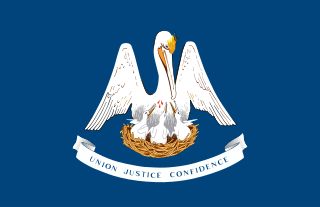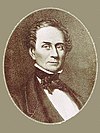
The Illinois General Assembly (IGA) is the bicameral legislature of the U.S. state of Illinois and comprises the Illinois House of Representatives and the Illinois Senate. The General Assembly was created by the first state constitution adopted in 1818. The State Senate has 59 members while the House has 118 members, all elected from single-member districts. A Senate district is formed by combining two adjacent House districts. The current General Assembly is Illinois's 100th. The General Assembly meets in the Illinois State Capitol in Springfield, Illinois. Its session laws are generally adopted by majority vote in both houses, and upon gaining the assent of the Governor of Illinois. They are published in the official Laws of Illinois.

The Tennessee General Assembly (TNGA) is the state legislature of the U.S. state of Tennessee. It is a part-time bicameral legislature consisting of a Senate and a House of Representatives. The Speaker of the Senate carries the additional title and office of Lieutenant Governor of Tennessee. In addition to passing a budget for state government plus other legislation, the General Assembly appoints three state officers specified by the state constitution. It is also the initiating body in any process to amend the state's constitution.

The Lieutenant Governor of New Jersey is an elected constitutional officer in the executive branch of the state government of New Jersey in the United States. The lieutenant governor is the second highest-ranking official in the state government and is elected concurrently on a ticket with the governor for a four-year term. Because the position itself does not carry any powers or duties other than to be next in the order of succession, the state constitution requires that the lieutenant governor be appointed to serve as the head of a cabinet-level department or administrative agency within the governor's administration.

The Louisiana State Legislature is the state legislature of the U.S. state of Louisiana. It is a bicameral body, comprising the lower house, the Louisiana House of Representatives with 105 representatives, and the upper house, the Louisiana Senate with 39 senators. Members of both houses are elected from single-member constituencies.

The 1896 South Carolina gubernatorial election was held on November 3, 1896 to select the governor of the state of South Carolina. William Haselden Ellerbe won the Democratic primary and easily won the general election to become the 86th governor of South Carolina.

The 1846 New York state election was held on November 3, 1846, to elect the Governor, the Lieutenant Governor and two Canal Commissioners, as well as all members of the New York State Assembly and eight members of the New York State Senate.
The following table indicates the party of elected officials in the U.S. state of Louisiana:

The Louisiana gubernatorial election, 1812, was the first gubernatorial election to take place after Louisiana achieved statehood. Under Article III Sec 2 of the 1812 Constitution of the State of Louisiana the Governor was elected in two steps. On the first Monday in July, eligible voters went to the polls and voted. The returns were sent to the President of the Louisiana State Senate. On the second day of the session of the Louisiana State Legislature, the Louisiana House of Representatives and Senate met in joint session and voted between the top two candidates. The candidate who received a majority in General Assembly became governor.
The United States Senate elections of 1856 and 1857 were elections which had the young Republican Party assume its position as one of the United States's two main political parties. The Whigs and Free Soilers were gone by the time the next Congress began.

The President of the Louisiana State Senate is the highest-ranking member of the Louisiana State Senate. As presiding officer, he or she convenes session and calls members to order, but can designate another state senator to preside in his or her place.

The Louisiana gubernatorial election, 1816, was the second gubernatorial election to take place after Louisiana achieved statehood. Under Article III Sec 2 of the 1812 Constitution of the State of Louisiana the Governor was elected in two steps. On the first Monday in July, eligible voters went to the polls and voted. The returns were sent to the President of the Louisiana State Senate. On the second day of the session of the Louisiana State Legislature, the Louisiana House of Representatives and Senate met in joint session and voted between the top two candidates. The candidate who received a majority in General Assembly became governor.

The Louisiana gubernatorial election, 1820, was the third gubernatorial election to take place after Louisiana achieved statehood. Under Article III Sec 2 of the 1812 Constitution of the State of Louisiana the Governor was elected in two steps. On the first Monday in July, eligible voters went to the polls and voted. The returns were sent to the President of the Louisiana State Senate. On the second day of the session of the Louisiana State Legislature, the Louisiana House of Representatives and Senate met in joint session and voted between the top two candidates. The candidate who received a majority in General Assembly became governor.

The Louisiana gubernatorial election, 1824, was the fourth gubernatorial election to take place after Louisiana achieved statehood. Under Article III Sec 2 of the 1812 Constitution of the State of Louisiana the Governor was elected in two steps. On the first Monday in July, eligible voters went to the polls and voted. The returns were sent to the President of the Louisiana State Senate. On the second day of the session of the Louisiana State Legislature, the Louisiana House of Representatives and Senate met in joint session and voted between the top two candidates. The candidate who received a majority in General Assembly became governor.

The Louisiana gubernatorial election, 1828, was the fifth gubernatorial election to take place after Louisiana achieved statehood. Under Article III Sec 2 of the 1812 Constitution of the State of Louisiana the Governor was elected in two steps. On the first Monday in July, eligible voters went to the polls and voted. The returns were sent to the President of the Louisiana State Senate. On the second day of the session of the Louisiana State Legislature, the Louisiana House of Representatives and Senate met in joint session and voted between the top two candidates. The candidate who received a majority in General Assembly became governor.

The Louisiana special gubernatorial election, 1830, was the sixth gubernatorial election to take place after Louisiana achieved statehood. Under Article III Sec 2 of the 1812 Constitution of the State of Louisiana the Governor was elected in two steps. On the first Monday in July, eligible voters went to the polls and voted. The returns were sent to the President of the Louisiana State Senate. On the second day of the session of the Louisiana State Legislature, the Louisiana House of Representatives and Senate met in joint session and voted between the top two candidates. The candidate who received a majority in General Assembly became governor. This particular election was called after the death of Governor Pierre Derbigny

The Louisiana gubernatorial election, 1834, was the seventh gubernatorial election to take place after Louisiana achieved statehood. Under Article III Sec 2 of the 1812 Constitution of the State of Louisiana the Governor was elected in two steps. On the first Monday in July, eligible voters went to the polls and voted. The returns were sent to the President of the Louisiana State Senate. On the second day of the session of the Louisiana State Legislature, the Louisiana House of Representatives and Senate met in joint session and voted between the top two candidates. The candidate who received a majority in General Assembly became governor.

The Louisiana gubernatorial election, 1838, was the eighth gubernatorial election to take place after Louisiana achieved statehood. Under Article III Sec 2 of the 1812 Constitution of the State of Louisiana the Governor was elected in two steps. On the first Monday in July, eligible voters went to the polls and voted. The returns were sent to the President of the Louisiana State Senate. On the second day of the session of the Louisiana State Legislature, the Louisiana House of Representatives and Senate met in joint session and voted between the top two candidates. The candidate who received a majority in General Assembly became governor.

The Louisiana gubernatorial election, 1846, was the first of two elections to take place under the Louisiana Constitution of 1845. The new constitution abolished the provision in the 1812 constitution that required a gubernatorial candidate to win a vote of the legislature to get elected, leaving the final decision up to the people. The new constitution also cut incumbent Governor Alexandre Mouton's term short by one year thus moving the election from July 1846 to January 1846 with the inauguration of the new governor in February.

The Louisiana gubernatorial election, 1849, was the last of two elections to take place under the Louisiana Constitution of 1845. The new constitution abolished the provision in the 1812 constitution that required a gubernatorial candidate to win a vote of the legislature to get elected, leaving the final decision up to the people. The new constitution also cut incumbent Governor Alexandre Mouton's term short by one year thus moving the election from July 1846 to January 1846 with the inauguration of the new governor in February.













